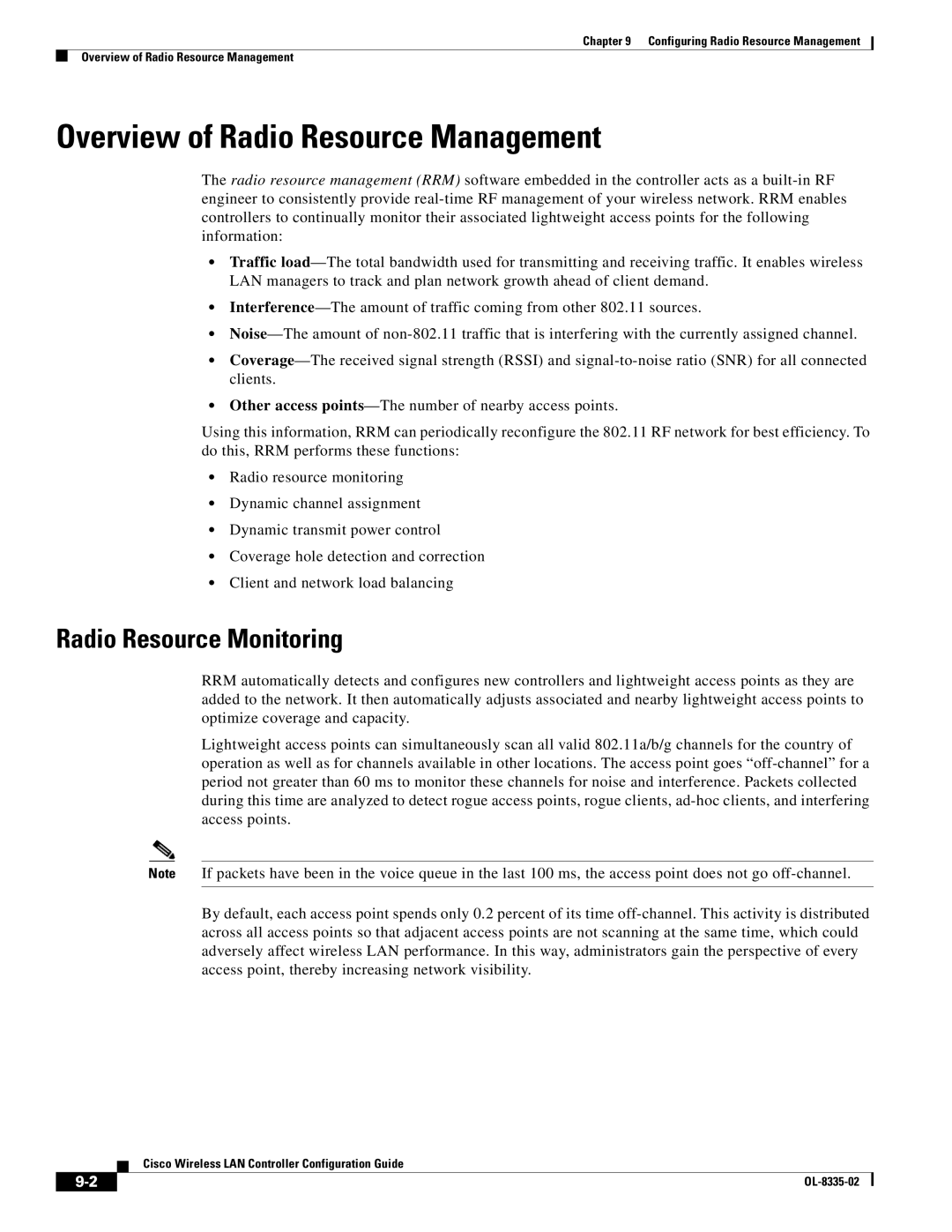
Chapter 9 Configuring Radio Resource Management
Overview of Radio Resource Management
Overview of Radio Resource Management
The radio resource management (RRM) software embedded in the controller acts as a
•Traffic
•
•
•
•Other access
Using this information, RRM can periodically reconfigure the 802.11 RF network for best efficiency. To do this, RRM performs these functions:
•Radio resource monitoring
•Dynamic channel assignment
•Dynamic transmit power control
•Coverage hole detection and correction
•Client and network load balancing
Radio Resource Monitoring
RRM automatically detects and configures new controllers and lightweight access points as they are added to the network. It then automatically adjusts associated and nearby lightweight access points to optimize coverage and capacity.
Lightweight access points can simultaneously scan all valid 802.11a/b/g channels for the country of operation as well as for channels available in other locations. The access point goes
Note If packets have been in the voice queue in the last 100 ms, the access point does not go
By default, each access point spends only 0.2 percent of its time
Cisco Wireless LAN Controller Configuration Guide
|
| |
|
